URBAN DESIGN FINALE
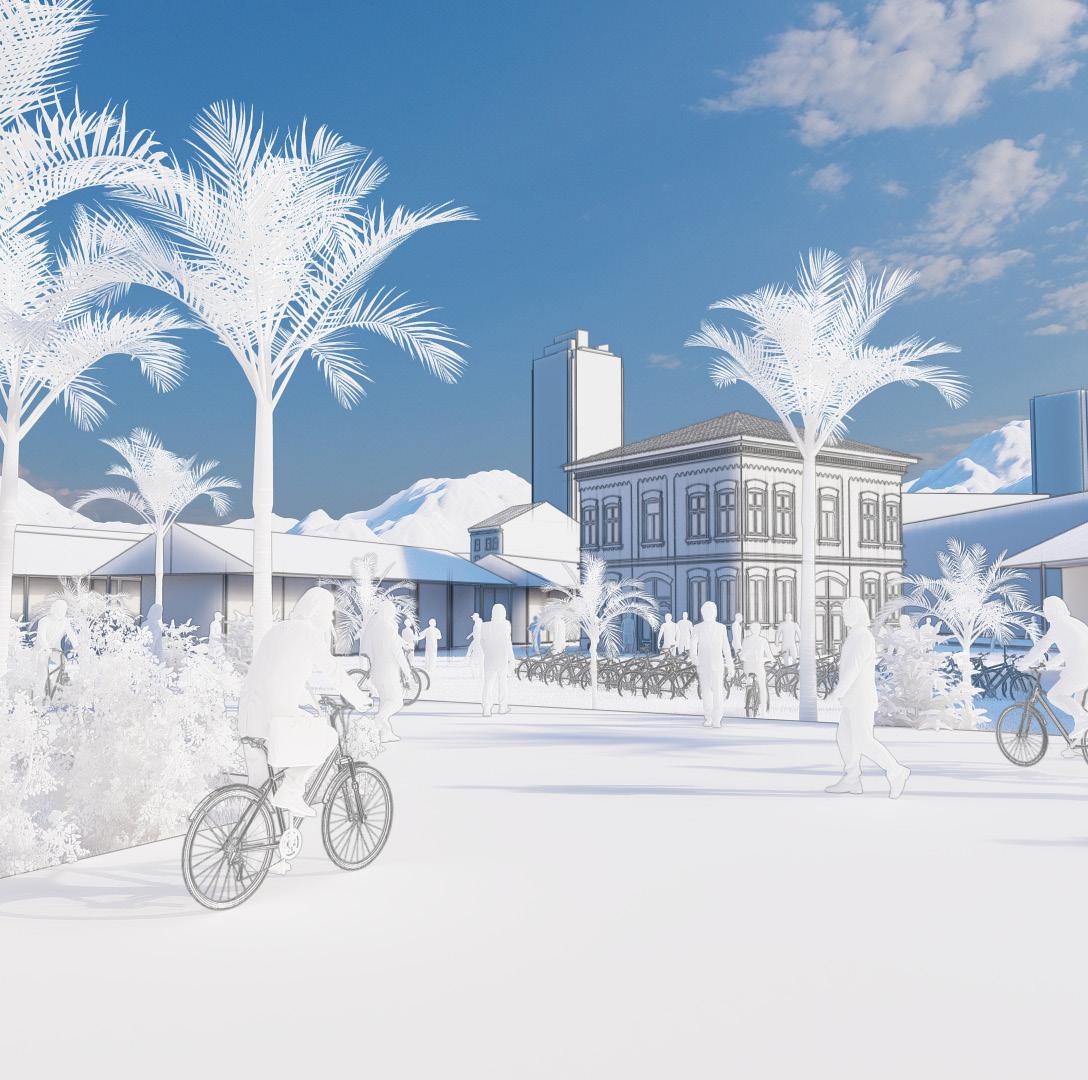


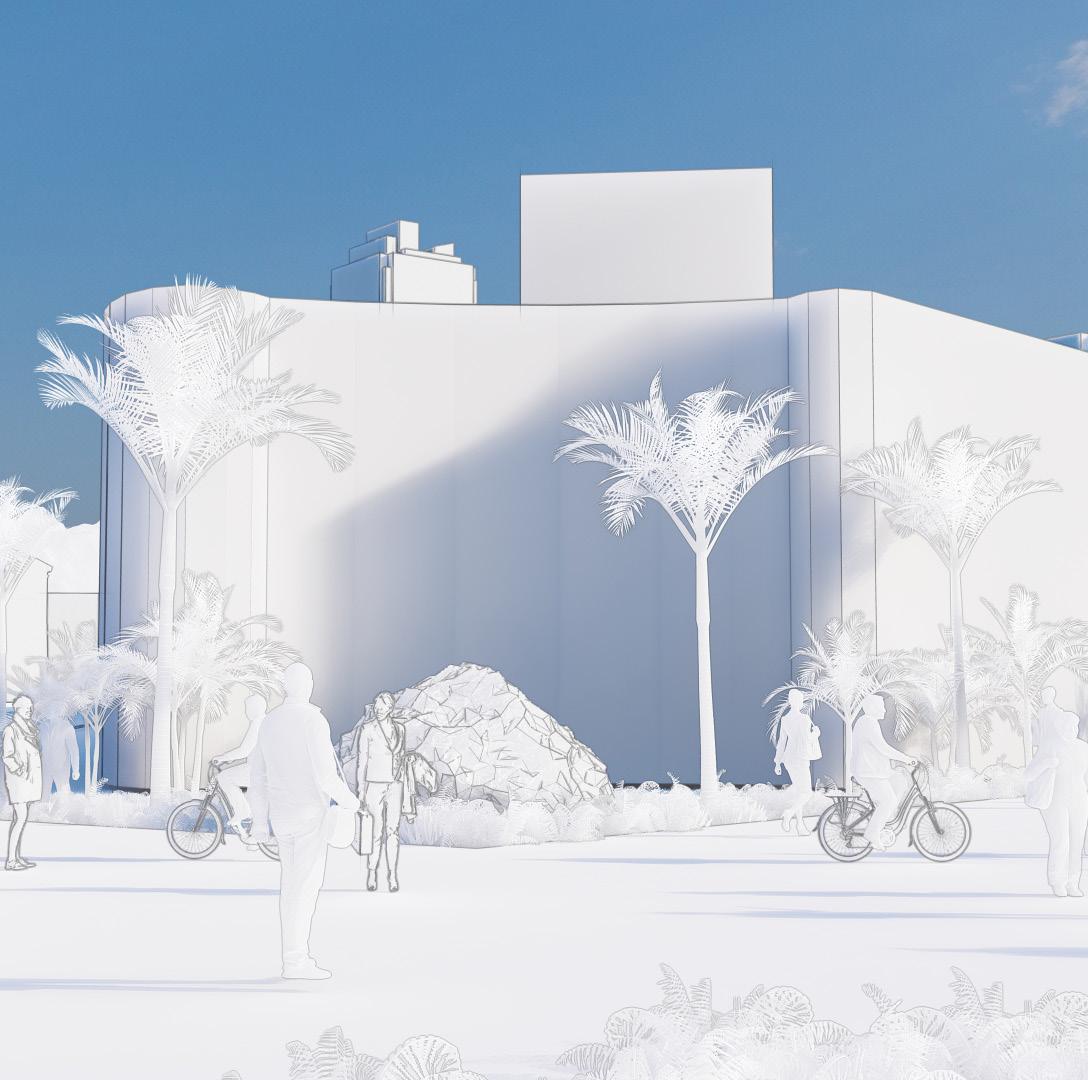

Each of us is carving a stone, erecting a column, or cutting a piece of stained glass in the construction of something much bigger than ourselves
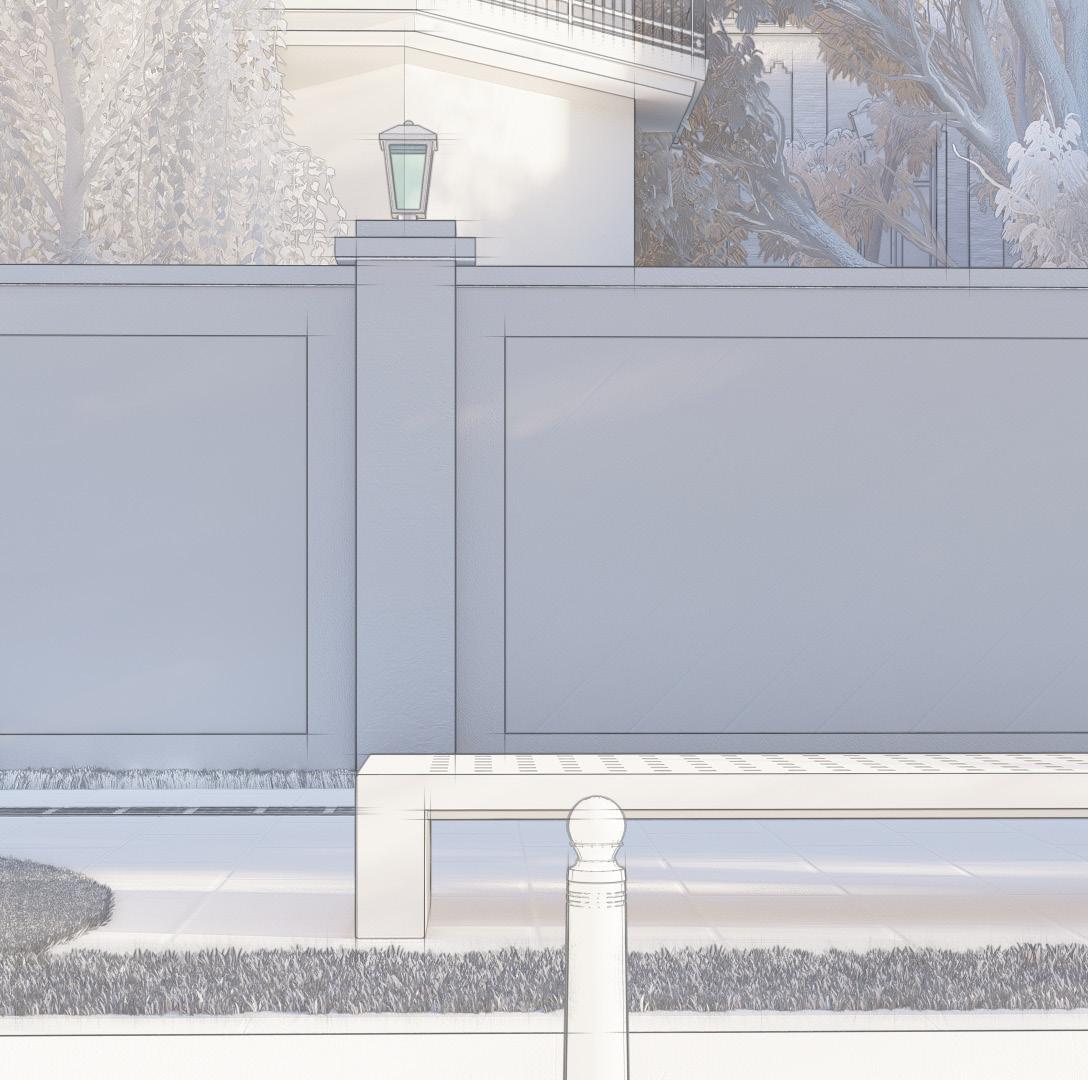
2023
INTRODUCTION /Manila’s 3rd Congressional District

The 3rd Congressional District of Manila encompasses the northern Manila districts of Binondo, Quiapo, Sta. Cruz, and San Nicolas. It has been represented in the House of Representatives of the Philippines since 1949, occupying barangays 268 to 394. The district is characterized by historical and cultural heritages and locations, encompassing diverse and rich communities of various ethnicities, religions, and social classes. The district is also known for its bustling commercial and economic activities, particularly in the areas of Binondo and Quiapo, which are famous for their markets, shops, and street vendors.
Despite its rich cultural and economic resources, the district has also been plagued by issues such as poverty, crime, and environmental degradation. The district’s densely populated areas, particularly in the slum communities, have been facing challenges in terms of access to basic services such as sanitation, healthcare, and education. In recent years, there have been efforts by the local government and community organizations to address these issues and improve the lives of residents in the district. The booklet will focus on highlighting the urban design and design proposals for the improvement of the 3rd Congressional District of Manila. It will feature articles on the district’s urban development and planning, showcasing innovative solutions to address issues such as poverty, crime, and environmental degradation.
Through this booklet, we aim to promote a deeper understanding of urban design and its impact on communities, and inspire readers to take an active role in shaping the future of the district by supporting and advocating for design proposals that improve the lives of residents. It is our hope that this booklet will be a valuable resource for professionals and community members alike, in creating a more livable, sustainable and equitable district.
2
Urban Design | 3rd Congressional District of Manila


3
Urban Design | 3rd Congressional District of Manila
HISTORY /Binondo, Quiapo, Santa Cruz, and San Nicolas
Binondo, Quiapo, Santa Cruz, and San Nicolas are all districts located in the city of Manila, Philippines. Each of these areas has a rich history that has shaped the city into what it is today. Throughout the centuries, these districts have evolved and despite the challenges that these districts have faced, they continue to be an important part of Manila’s identity and culture, and their preservation and revitalization is crucial for the city.

Binondo, also known as Manila’s Chinatown, is one of the oldest districts in the city. It was established in the 1594 by the Spanish colonial government as a settlement for Chinese immigrants. The district quickly became an important center for trade and commerce, and it remains so today. Many of the buildings in the area date back to the Spanish colonial period and are excellent examples of traditional Chinese-Filipino architecture. The district is also home to many Chinese-Filipino cultural institutions, such as temples and community organizations. The district also offers a wide variety of Chinese-Filipino cuisines, from traditional dishes to contemporary fusion, making it a popular destination for foodies and tourists.
Quiapo, located west of Binondo, is known for its vibrant street markets and its religious significance. The district is home to the famous Black Nazarene Church, which attracts thousands of devotees every year during its annual procession. Quiapo is also known for its many street vendors selling a wide variety of goods, including traditional Filipino crafts and textiles. The district is also home to a number of educational institutions, such as the Philippine Normal University and the Technological University of the Philippines. In addition, Quiapo is also known for its vibrant street art scene, with many of the buildings and streets adorned with colorful murals and graffiti, adding to the district’s character and charm.
4
Urban Design | 3rd Congressional District of Manila
Santa Cruz is located on the right bank of the Pasig River, and is known for its cultural heritage and historical significance. The district is home to Manila's earliest modern architecture and oldest cemeteries. The area is also known for its bustling markets, such as the Divisoria market, which is a popular destination for both locals and tourists. Despite its rich cultural heritage, the district of Santa Cruz has long been plagued by issues of poverty and urban decay, however, in recent years, there have been efforts to revitalize the area and address these issues.

San Nicolas is a historic district located north of Santa Cruz. It is known for its historical significance, as it was one of the first areas to be settled by the Spanish colonial government in the late 16th century. The district is home to a number of important historical buildings, such as the San Nicolas de Tolentino Church, which dates back to the Spanish colonial period. The district is also home to a number of traditional Filipino businesses, such as metalworking and textile manufacturing. The district also boasts a vibrant street art scene, featuring murals and graffiti that reflect the district's rich cultural heritage and history.

5
Urban Design | 3rd Congressional District of Manila
background
Known as the world’s oldest Chinatown, Binondo’s influence extends beyond to places surrounding the district, such as Quiapo, Sta. Cruz, San Nicolas, and Tondo. Binondo is a known location for commerce hubs and business clusters, and market – home to the famously known Divisoria. Binondo is the center of commerce and trade of Manila, where all types of business run by FilipinoChinese thrive.
Binondo is geographically located north of Intramuros, west of San Nicolas, east of Sta. Cruz, and south of Tondo. The district is bounded by Pasig River in the south, while Estero de Binondo runs through the length of the west side, Estero dela Reina bounds the southeast part of the district before running through the middle of the district, Recto Avenue bounds the northern part of Binondo. Entry points into the district consist of Recto Avenue and Sta. Elena St. via Estero dela Reina for the northwest part, Juan Luna Bridge, San Fernando Bridge, Mlle. de Binondo, Dasmarinas St., and Mlle. de Industria for the west and southwest points of the district, from Intramuros is the Jones Bridge, and Escolta St., Sabino Padilla St., Ongpin St., and Soler St. for entering east, crossing Estero de la Reina.
The district is known for its rich cultural heritage, with an array of historical and religious sites, such as the Binondo Church, the oldest stone church in Manila, and the Guan Yin Teng Temple, one of the oldest and most important Chinese temples in the Philippines. The district is also home to a diverse community of Filipino-Chinese residents, with a variety of businesses and shops that reflect the cultural influences of both Philippines and China.
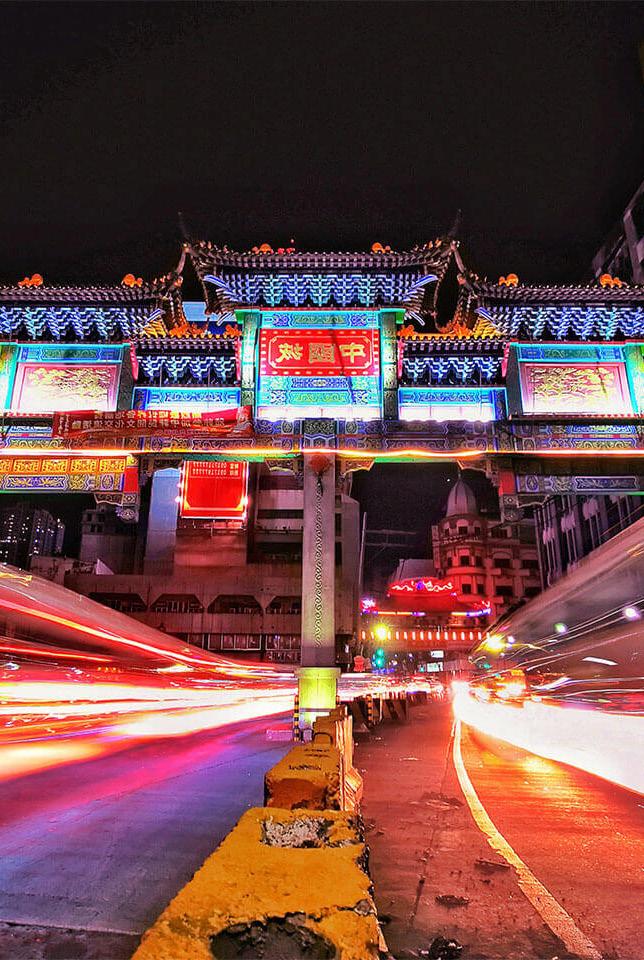
BINONDO /MANILA

6
Urban Design | 3rd Congressional District of Manila
QUIAPO /MANILA
Quiapo is a district of the city of Manila, in the National Capital Region of the Philippines. Referred to as the “Old Downtown of Manila”, Quiapo is home to the Quiapo Church, where the feast of the Black Nazarene is held with millions of people attending annually. Quiapo has also made a name for itself as a place for marketplace bargain hunting.
Quiapo is geographically located at the very center of the city of Manila. It is bounded by the Pasig River and Estero de San Miguel to the south, San Miguel to the east, Recto Avenue to the north and Rizal Avenue to the west. To access the district from the Intramuros area, one must traverse the Manuel L. Quezon Bridge to Quezon Boulevard. Accessing the district from San Miguel requires crossing from the following bridges, from left to right: Carlos Palanca Bridge, P. Casal Bridge, Nepomunceno Bridge, Arlegui Bridge, San Rafael Bridge. Upper portion of the district is bounded by Recto Avenue. Left portion of the district is bounded by Rizal Avenue. Right side portion of the district is bounded by Estero de San Miguel. The district is surrounded by other interconnected districts, Sta. Cruz bounded its west, Sampaloc in the north, San Miguel borders much of its southeast borders, and Ermita and Intramuros covers its south.

Despite its rich cultural and historical significance, Quiapo is also known for its bustling commercial and economic activities, particularly in the areas of Quiapo Market, home to a wide variety of goods and products that are sold at bargain prices. The district is also known for its street vendors and street food, which attract visitors from all over the city. However, like many other districts in Manila, Quiapo is in need of sustainable urban design solutions to improve the lives of residents in the district.

7
Urban Design | 3rd Congressional District of Manila
STA.CRUZ /MANILA

Located on the right bank of the Pasig River close to its mouth, Santa Cruz is a district in the northern part of Manila, Philippines. The area is a part of Manila’s third congressional district. The district is also a well-known for its cultural legacy and heritage, home to Manila’s earliest modern architecture and oldest cemeteries. It is also known for its bustling markets, such as the Divisoria market, which is a popular destination for both locals and tourists to shop for a variety of goods at affordable prices.
Sta. Cruz is geographically located at the northeast part of Manila. It is bounded by southeast of Caloocan City at its north, Tondo at its west, Binondo at its southwest, Intramuros at its south, Quezon City at its northeast, and Sampaloc and Quiapo at its southeast. Rizal Avenue prominently bounds the districts’ west portion, with the avenue also serving as its major route, connecting the district to primary routes such as Recto Avenue, Tayuman Street, and Blumentritt Road. The district is also home to a number of educational institutions, including the University of Santo Tomas, one of the oldest and most prestigious universities in the Philippines.
The district’s proximity to the Pasig River has also made it susceptible to flooding, further exacerbating the already dire living conditions for many of its residents. However, in recent years, there have been efforts to revitalize the area and address these issues. The Santa Cruz Riverwalk, for example, is a project aimed at transforming the Pasig River into a major tourist attraction and promoting sustainable development in the area. Additionally, the government has implemented a number of programs aimed at improving the livelihoods of Santa Cruz residents, including housing and livelihood programs. These efforts have shown some promise and have helped to begin the process of revitalizing the district.

8
Urban Design | 3rd Congressional District of Manila
Known as the world’s oldest Chinatown, Binondo’s influence extends beyond to places surrounding the district, such as Quiapo, Sta. Cruz, San Nicolas, and Tondo. Binondo is a known location for commerce hubs and business clusters, and market – home to the famously known Divisoria. Binondo is the center of commerce and trade of Manila, where all types of business run by FilipinoChinese thrive.
Binondo is geographically located north of Intramuros, west of San Nicolas, east of Sta. Cruz, and south of Tondo. The district is bounded by Pasig River in the south, while Estero de Binondo runs through the length of the west side, Estero dela Reina bounds the southeast part of the district before running through the middle of the district, Recto Avenue bounds the northern part of Binondo. Entry points into the district consist of Recto Avenue and Sta. Elena St. via Estero dela Reina for the northwest part, Juan Luna Bridge, San Fernando Bridge, Mlle. de Binondo, Dasmarinas St., and Mlle. de Industria for the west and southwest points of the district, from Intramuros is the Jones Bridge, and Escolta St., Sabino Padilla St., Ongpin St., and Soler St. for entering east, crossing Estero de la Reina.
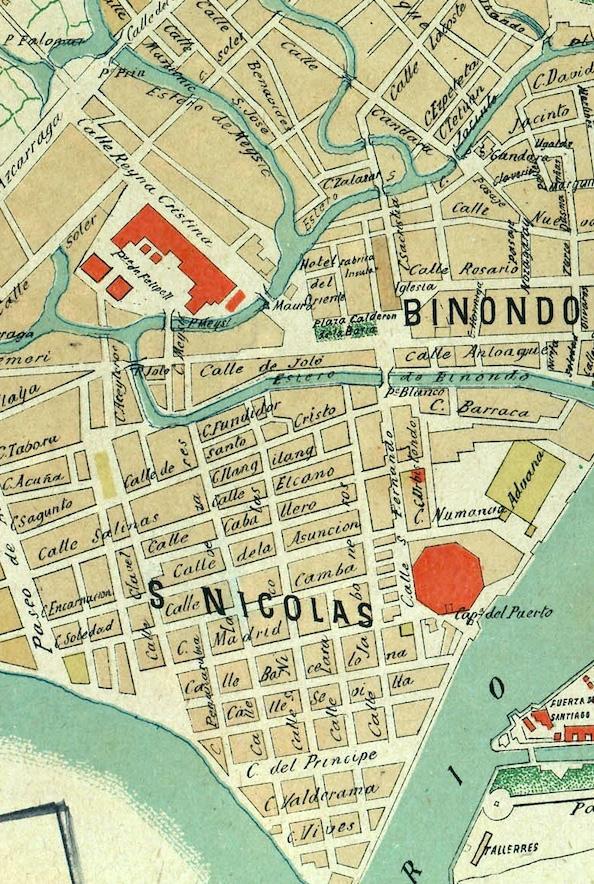
The district is known for its rich cultural heritage, with an array of historical and religious sites, such as the Binondo Church, the oldest stone church in Manila, and the Guan Yin Teng Temple, one of the oldest and most important Chinese temples in the Philippines. The district is also home to a diverse community of Filipino-Chinese residents, with a variety of businesses and shops that reflect the cultural influences of both Philippines and China.

SAN NICOLAS /MANILA
9
Urban Design | 3rd Congressional District of Manila
URBAN ECOLOGY / Binondo /
Binondo:
Popul ation – 20,491 (2020) Area – 0.6660 km²
Quiapo
Population Density – 30,767/km² (2020)


Notable Heritage and Cultural Sites:
1. Ongpin Street – Where a prominent area of Chinatown is concentrated being known as the Binondo Food Crawl – Ongpin St. is home to well-known Chinese food establishments.
2. Minor Basilica of San Lorenzo Ruiz – Founded in 1596, the church is a well-known histocultural spot in the district.
3. Divisoria Market – Known for its densely-packed streets with vendors and visitors. Divisoria is a commercial center famous for its low-priced goods and diverse manufacturing activities.
Quiapo:
Popul ation – 29,846 (2020)v Area – 0.8820 Km²
Population Density – 33,839/km² (2020)
Notable Heritage and Cultural Sites:
1. Quiapo Church & Plaza Miranda – Known as the hom e of the Black Nazarene, Quiapo Church and Plaza Miranda is a prominent tourism and heritage spot in the district.
2. San Sebastian Church – Built in 1891, the San Sebastian Church is well-known due to its Gothic Revival architecture built with prefabricated steel originating from Belgium. It is the only church made of steel in the country.
3. Recto Avenue – The known avenue spans across seven districts and is home to principal commercial areas and the University Belt.
Urban Design | 3rd Congressional District of Manila

10
/ Sta.Cruz / San Nicolas
Sta.Cruz:

Popul ation – 126,735 (2020) Area – 3.068 km²
Population Density – 41,309/km² (2020)
Notable Heritage and Cultural Sites:
1. Sta. Cruz Church – B uilt in 1619, the church is a known baroque architecture in the area. Also characterized by Ionic pillars, the interior of the church is also influenced by Art Deco and Romanesque. The church also features intricate frescoes and stained glass windows, adding to its beauty and historical significance.
2. Carriedo St. and Plaza Lacson, Rizal Avenue – Known historical site for Manila’s prominent old skyscraper architecture, such as the Don Ramon Santos Building, the First United Building and the Regina Building, both by Architect Andres Luna de San Pedro.
San Nicolas:
Popul ation – 42,957 (2020) Area – 0.9350 km²
Population Density – 20,551/km² (2020)


Notable Heritage and Cultural Sites:
1. Pasi g River Lighthouse – Also known as the Farola, it I the first light station in the Philippines when it was established in 1642.
2. The Basilica de San Nicolas de Tolentino – a historic church built in 1619, known for its baroque architecture and featuring Ionic pillars, Art Deco and Romanesque influences, frescoes, and stained glass windows.
3. The Bahay Tsinoy – a museum that showcases the history and culture of the ChineseFilipinos, also known as Tsinoys
Urban
11
Design | 3rd Congressional District of Manila
current site conditions

The urban landscape of our cities is constantly evolving and changing. One of the key factors that influence this change is the site conditions of a particular area. The site conditions refer to the physical, social, and economic characteristics of a specific location that affect its development and use. The site conditions of a particular area can greatly influence the quality of life of its residents and visitors. In this essay, we will discuss the site conditions of an area that is currently facing a number of challenges.
One of the main issues that this area is facing is a lack of proper circulation. The streets are narrow and congested, making it difficult for pedestrians and vehicles to move around. This not only creates traffic congestion but also makes it difficult for emergency services to access the area. Additionally, the lack of proper circulation also makes it challenging for people with mobility issues to access the area.

Another issue that this area is facing is the clustering of stores. The area is home to a number of small retail businesses, which are concentrated in certain areas. While this may seem like a positive aspect, as it allows for easy access to goods and services, it also creates problems such as traffic congestion, litter and noise pollution. Additionally, it can also lead to saturation of retail businesses making it difficult for small businesses to survive.

12
Urban Design
| 3rd Congressional District of Manila
Plaza Miranda /QUAIPO

Another important aspect of this area is the presence of a nearby police station. This may seem like a positive aspect, as it provides a sense of security for the residents and visitors. However, the proximity of the police station can also create problems such as increased crime rates and a lack of privacy.

The area also has an improper parking area. The lack of proper parking facilities can create problems such as traffic congestion, litter, and noise pollution. This can also make it difficult for people with mobility issues to access the area.
Finally, the area does not have a noticeable disposal area. This can create problems such as litter, pollution and rodent infestation. This can not only make the area unpleasant to live and work in, but it can also have a negative impact on the environment.
In conclusion, the site conditions of this area are facing a number of challenges that can greatly impact the quality of life of its residents and visitors. While the presence of a nearby police station and a variety of retail businesses may seem like positive aspects, they also create problems such as traffic congestion, litter, noise pollution and lack of privacy. To address these issues, it is important for the community and local government to work together to develop solutions that will improve the site conditions of the area. This may include implementing proper circulation, creating proper parking and disposal areas, and encouraging a more diverse mix of uses in the area. One possible solution to address these issues could be the implementation of a comprehensive urban design plan which focuses on creating a balance between the built environment and the natural environment. This could include things like incorporating green spaces and improving the circulation of the area.
13
Urban Design | 3rd Congressional District of Manila
Plaza San Lorenzo Ruiz /BINONDO


The design and layout of a city can greatly influence the quality of life for its residents and visitors. Site conditions, such as the presence of shading structures, open spaces, and areas of interaction, can greatly impact the comfort, safety, and overall enjoyment of an area. It is therefore important for city planners and urban designers to consider these site conditions when planning and developing new areas, in order to create livable and sustainable communities.
One of the main issues that this area is facing is minimal shading structures. The area is exposed to the sun for most of the day, making it uncomfortable for residents and visitors during hot weather. This not only creates a discomfort but also makes it difficult for people to spend time in the area. The lack of shading structures can also lead to an increase in heat-related illnesses and a decrease in the overall enjoyment of the area. Additionally, the lack of shading structures can also negatively impact the local ecosystem, as it can lead to a decrease in biodiversity and an increase in heat island effect. This can have a detrimental impact on the environment and the local community. Furthermore, the lack of shading structures can also negatively affect the local economy, as it can make the area less attractive to visitors and potential businesses, leading to a decline in foot traffic and economic activity.
Another issue that this area is facing is the lack of large open spaces for activities. The area does not have a park or other large open space for residents and visitors to engage in physical activity, enjoy nature, or participate in community events. This can greatly limit the opportunities for social interaction and community building.
14
Urban Design | 3rd Congressional District of Manila
In conclusion, the site conditions of this area are facing a number of challenges that can greatly impact the comfort, safety, and overall enjoyment of the area for its residents and visitors. The lack of shading structures, open spaces and areas of interaction can greatly affect the quality of life of the community. It is important for the community and local government to work together to develop solutions that will improve the site conditions of the area. This may include incorporating shading structures such as trees, shading sails or canopies, creating open spaces and promoting sustainable design practices such as green roofs and walls. This will not only improve the overall comfort and enjoyment of the area, but also have a positive impact on the environment and economy. Additionally, it is important for planners and designers to consider the continuity and aesthetic of the area, in order to create a cohesive and welcoming environment for all.
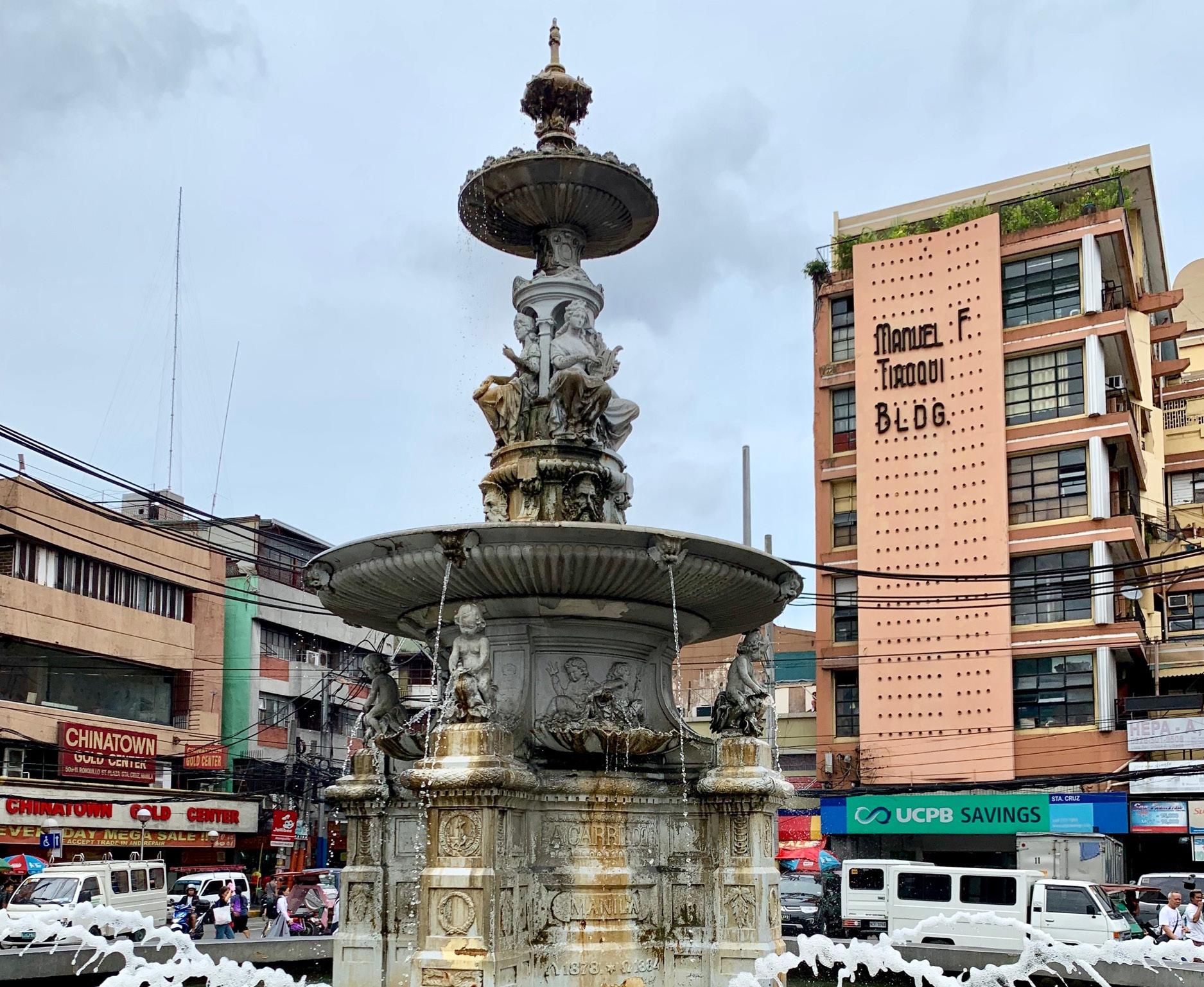


Urban
| 3rd
15
Design
Congressional District of Manila
Avenida /STA. CRUZ
In today's urban landscape, the design and layout of a city can greatly influence the quality of life for its residents and visitors. Site conditions, such as the presence of open spaces, parking facilities, and lighting, can greatly impact the comfort,
Another issue that this area is facing is the roadside parking. This can create problems such as traffic congestion, litter, and noise pollution. This can also make it difficult for people with mobility issues to access the area, and can create a safety


16
Urban Design | 3rd Congressional District of Manila
In conclusion, the site conditions of this area are facing a number of challenges that can greatly impact the comfort, safety, and overall enjoyment of the area for its residents and visitors. The presence of open areas that are bland and lack development, roadside parking and other issues can greatly affect the quality of life of the community. It is important for the community and local government to work together to develop solutions that will improve the site conditions of the area. This may include developing open spaces, creating proper parking facilities and encouraging a more diverse mix of uses in the area. This will not only improve the overall comfort and enjoyment of the area, but also have a positive impact on the environment and economy.

Moreover, it is important to consider the design and aesthetic of the area, to ensure that it is visually appealing and inviting for the public. This can include incorporating landscaping, public art, and other design elements that can enhance the overall look and feel of the area.
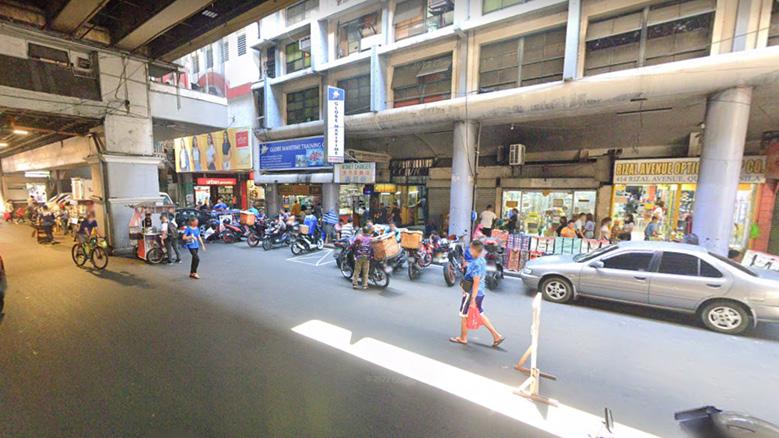
Additionally, community engagement and participation should also be a key aspect of any plan to improve the site conditions, as the input and feedback from residents and local business owners can provide valuable insights and solutions. By working together, the community and local government can create a vibrant and livable community that benefits everyone.
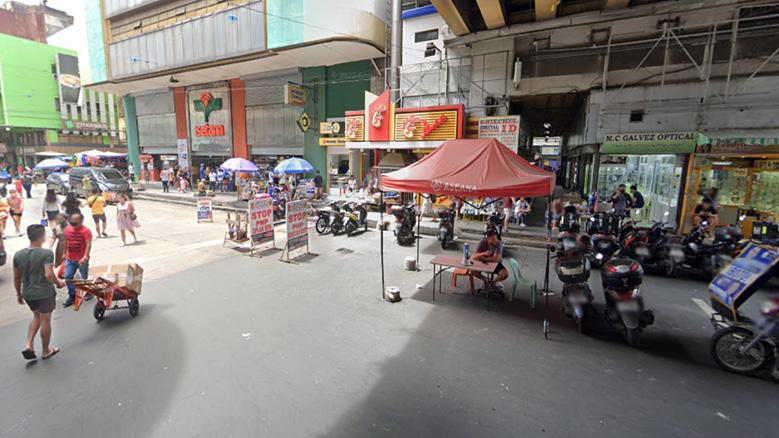
17
Urban Design | 3rd Congressional District of Manila
Proposed Plaza Miranda /QUIAPO
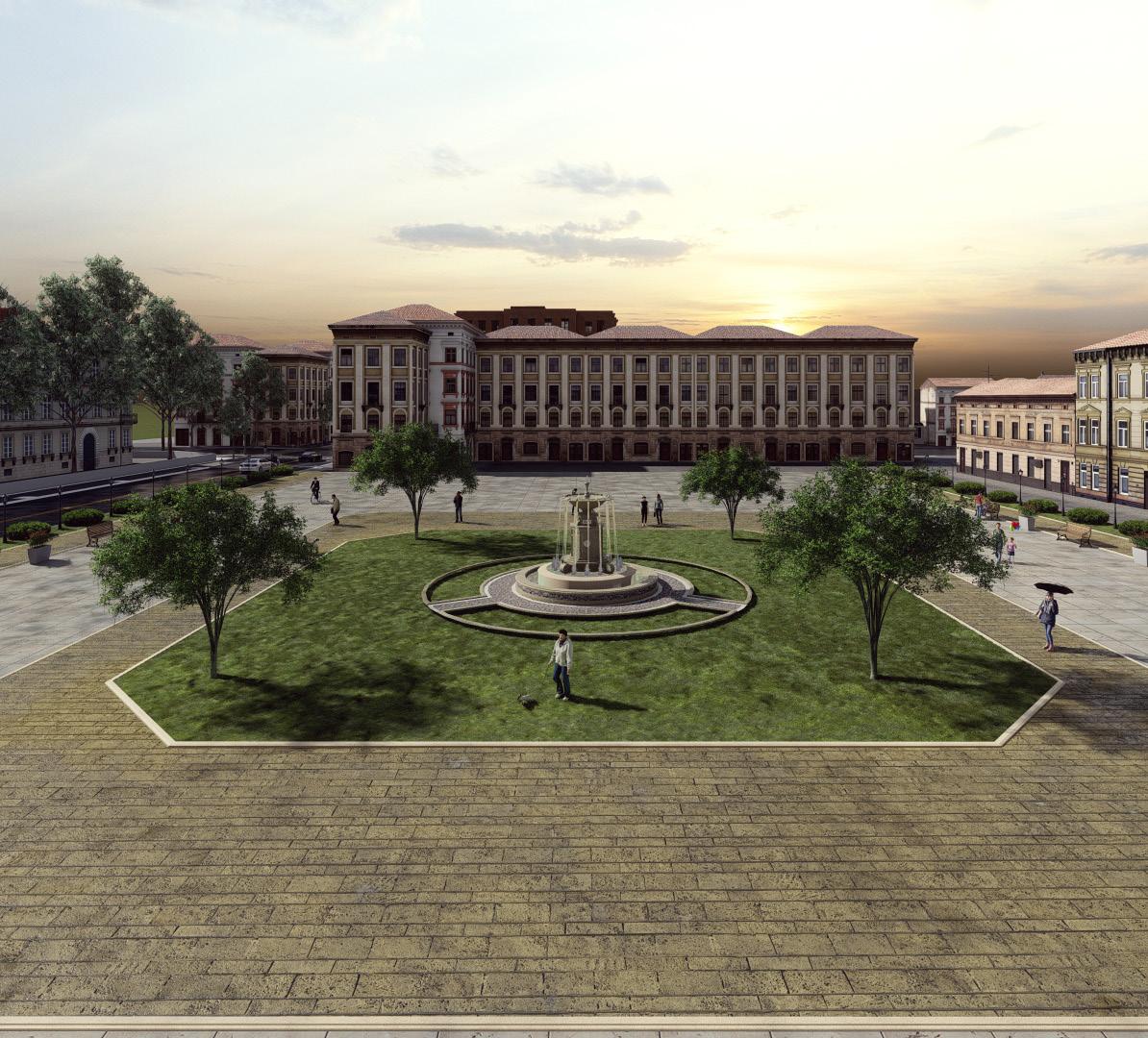


The proposal calls for the implementation of a comprehensive circulation plan to improve the flow of foot and vehicle traffic throughout the area. This can include the creation of new sidewalks, bike lanes, and dedicated bus lanes, as well as the redesign of existing streets to improve safety and accessibility. Moreover, the proposal includes the implementation of traffic-calming measures such as speed humps, roundabouts, and traffic circles , in order to slow down vehicles and enhance the safety of pedestrians.

18
Urban Design | 3rd Congressional District of Manila
To address the clustering of stores, the proposal includes the creation of mixeduse development that includes a mix of retail, residential, and office space. This will not only create a more diverse and vibrant community but also reduce the negative impacts of concentrated commercial activity.

The proposal also calls for the development of proper parking facilities, including the creation of dedicated parking areas, and the installation of parking meters. This will not only improve the overall safety and accessibility of the area but also reduce traffic congestion and litter. In addition, the proposal also includes the development of proper disposal area and incorporating sustainable features such as recycling and composting to enhance the environmental performance of the area. Moreover, the proposal includes the implementation of traffic-calming measures such as speed humps, roundabouts, and traffic circles.


19
Urban Design | 3rd Congressional District of Manila
Proposed Plaza San Lorenzo Ruiz /BINONDO


The proposal calls for the incorporation of shading structures such as trees, shading sails, or canopies throughout the area. This will not only provide relief from the sun and heat, but also improve the overall aesthetic of the area. Additionally, the proposal calls for the creation of a large open space for activities such as a park or community garden. This will provide residents and visitors with a place to engage in physical activity, enjoy nature, and participate in community events.
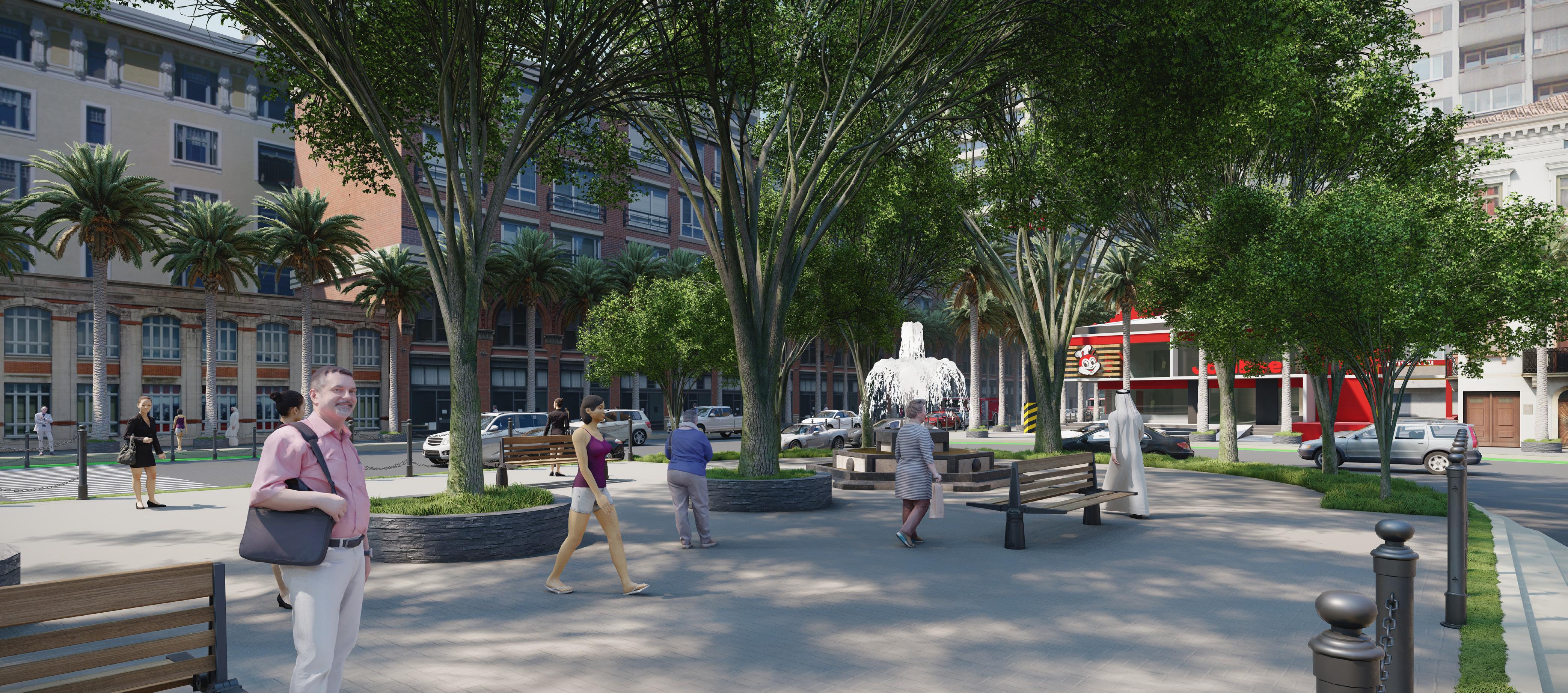 20
Urban Design | 3rd Congressional District of Manila
20
Urban Design | 3rd Congressional District of Manila
The proposal also calls for the development of proper activity areas and areas of interaction. This can include the creation of seating areas, play spaces for children, and other amenities that encourage social interaction and community building. Additionally, the proposal also calls for the development of a cohesive aesthetic throughout the area. This can include the incorporation of design elements such as landscaping, public art, and other elements that create a sense of continuity and enhance the overall look and feel of the area. Lastly, the proposal also includes the integration of sustainable features such as energy-efficient lighting to enhance the environmental performance of the area.
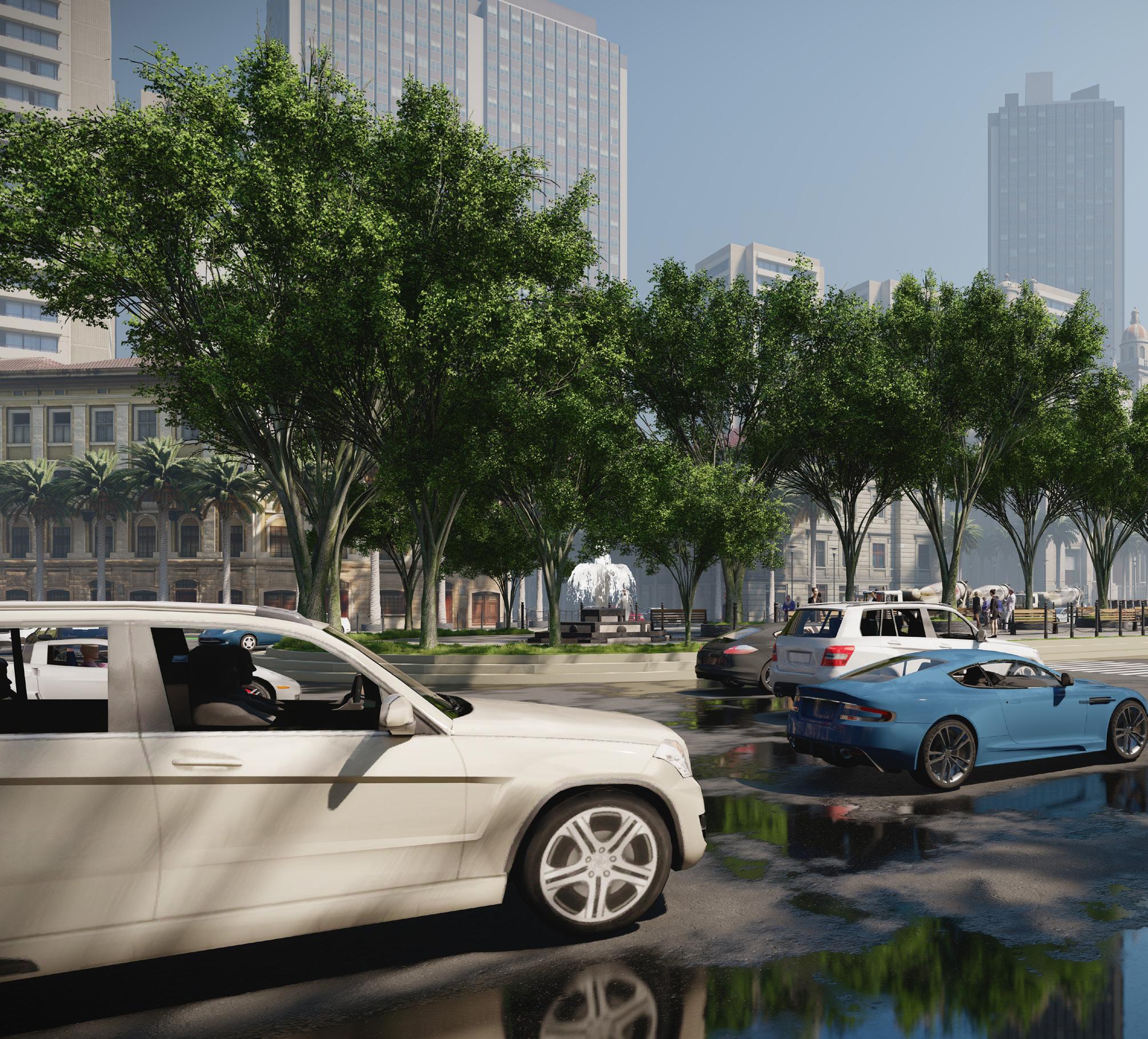
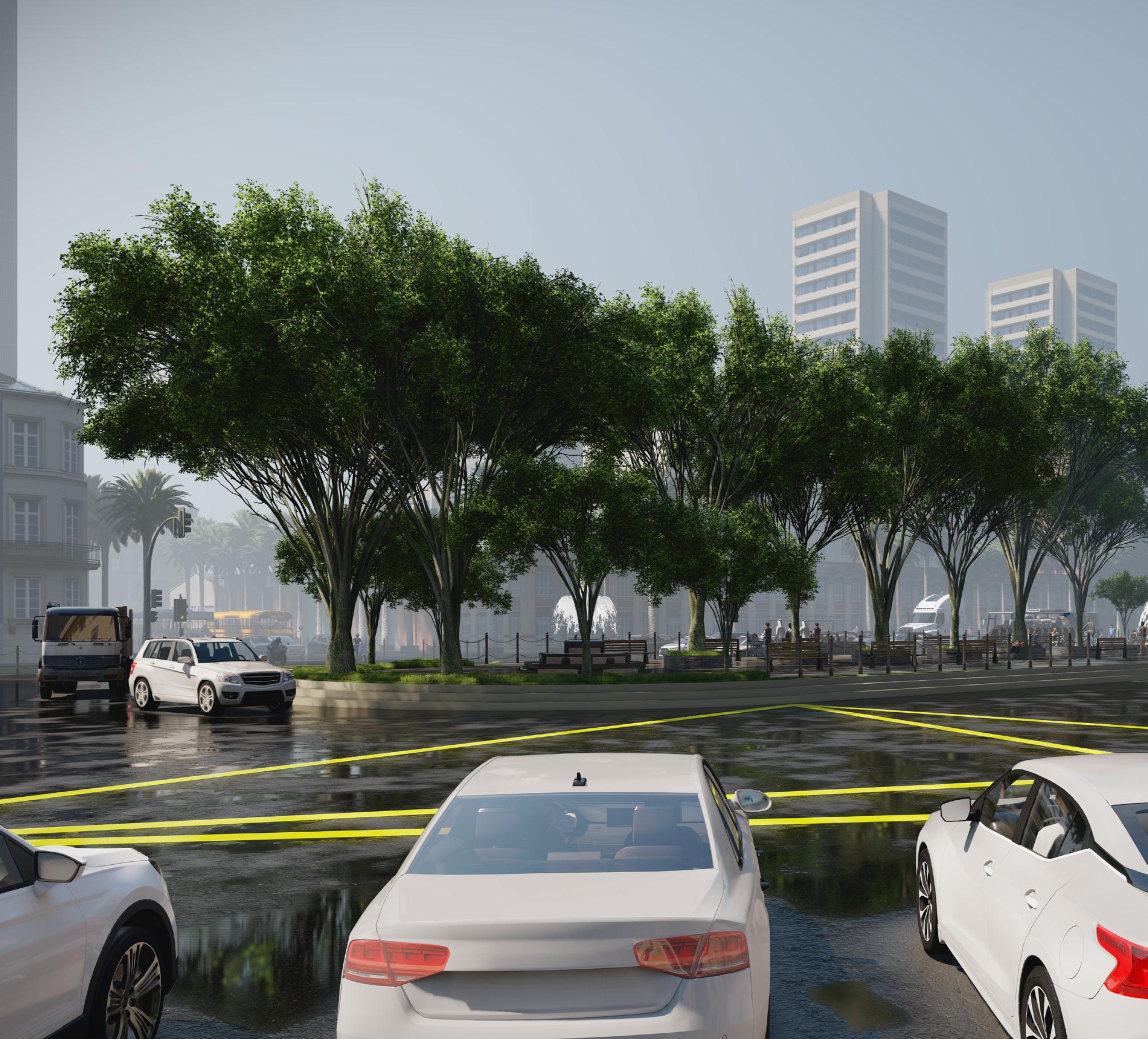
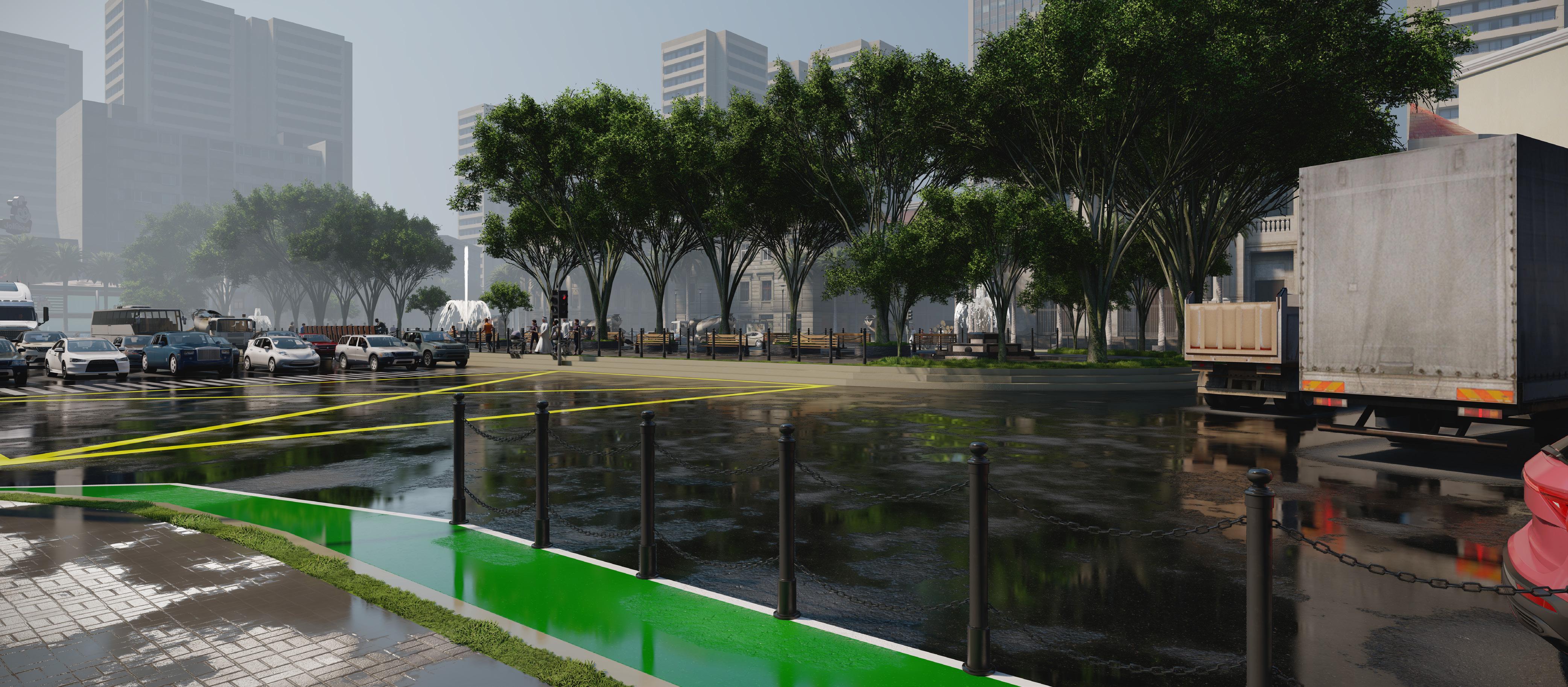

21
Urban Design | 3rd Congressional District of Manila
Proposed Avenida /SANTA CRUZ

For years, the area surrounding the LRT station has been nothing more than a bland, underutilized space. But a new urban design proposal aims to change that. The proposal seeks to address the current issues of open areas along the road that lack development, road side parking, and a general lack of activity in the area. But it also takes into account the positive attributes of the area, such as its cleanliness and well-lit environment under the LRT station.

One of the key elements of the proposal is the incorporation of mixed-use development. This will include residential, commercial, and retail spaces that will not only add vibrancy to the area but also provide much-needed amenities for the community. The development will also include a focus on sustainable design, with green spaces and energyefficient buildings.


22
Urban Design | 3rd Congressional District of Manila
To address the issue of road side parking, the proposal includes the creation of a multi-level parking facility. This will not only provide ample parking for the new development but also for the surrounding community. To enhance the area's safety, the proposal also includes the installation of a monitoring station. This will not only provide added security for the new development but also for the surrounding community.
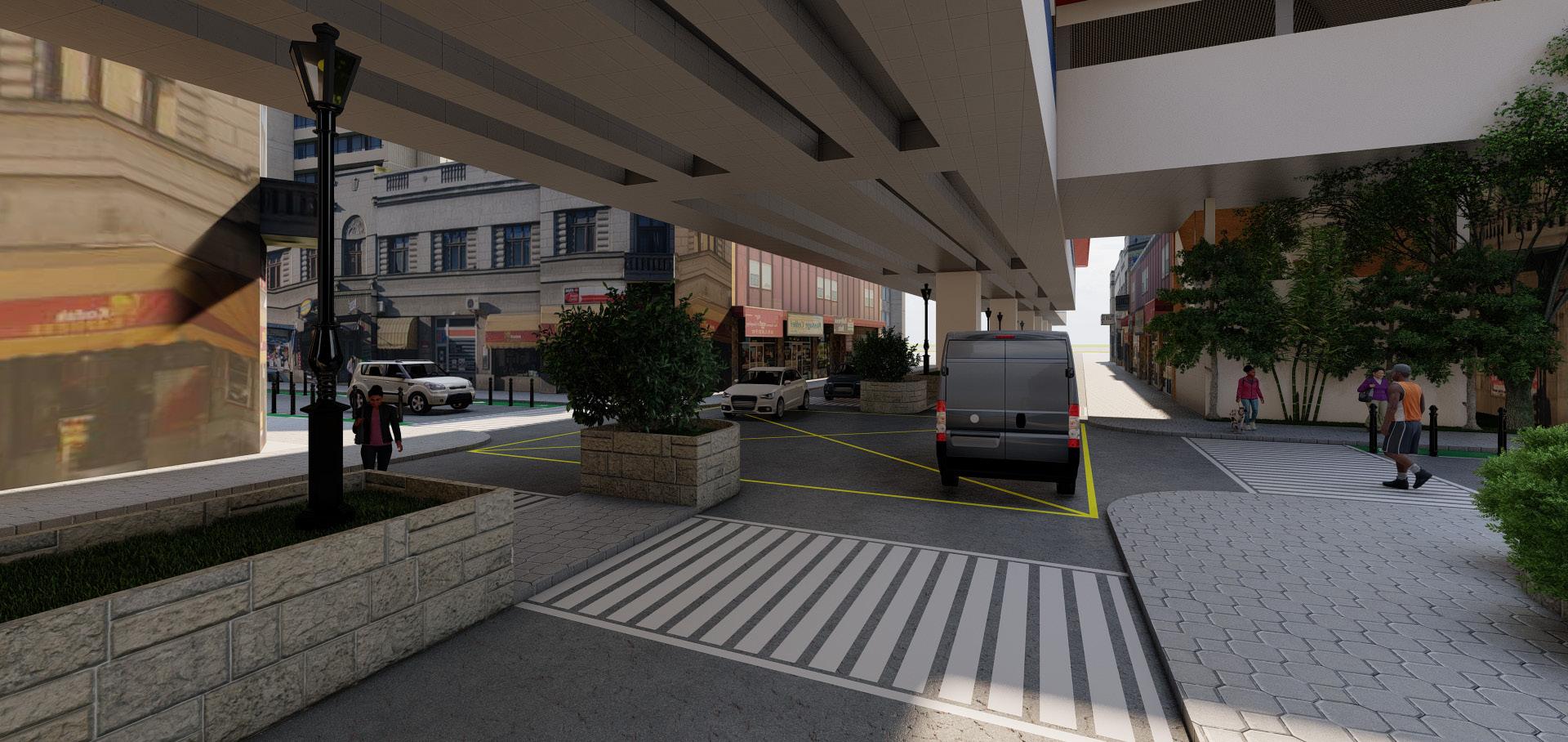

This proposal is not just about creating a new development, it's about revitalizing the entire area and making it a destination for residents and visitors alike. The community will finally have a space they can be proud of, and it will serve as a model for other underutilized areas in the city.


23
Urban Design | 3rd Congressional District of Manila
*The information and content provided in this project are for informational and proposal purposes only. The ideas and proposals presented in this project are not intended to be taken as legal, financial, or professional advice. The author of this project does not guarantee the accuracy, completeness, or usefulness of any information provided. Any actions taken based on the information provided in this project are done so at the reader's own risk. The author of this project will not be held liable for any errors or omissions in the information provided or for any actions taken in reliance on this information.
Landicho , Armer David E. Ismil , Hannah S. Arcega , Joanna Rose H. Bacolod , Maria Celina Gwen R. Castro , Kiara Mikaela I. Rodriguez Dan Raymond A.

/Specialization 2: Urban Design
2018-01018 2018-00936 2018-10410 2018-01023 2018-10266 2018-10481
authors

































 20
Urban Design | 3rd Congressional District of Manila
20
Urban Design | 3rd Congressional District of Manila








